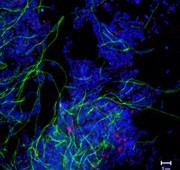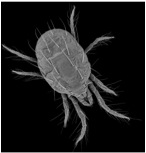Mount Marty College students wrap first project with DOE JGI’s “Interpret a Genome” program
“Annotating genes is a lot of work, and you have to pay a lot of attention to detail,” said April Knapp, one of seven students who presented findings from the class’s research Friday. “But it’s also very interesting because bioenergy and biofuel is such a high-needs fields. To know that the research we did here… [Read More]

